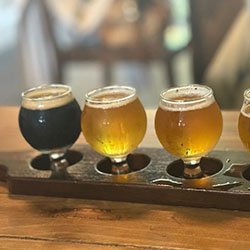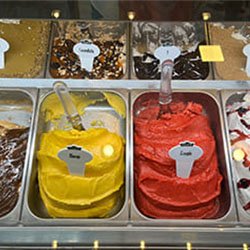If you are someone interested in Spanish, you would have seen or heard of at least once the novel about Don Quixote, also known by the name of the discount store chain (Don Quijote), with the original title of Part 1 being "El Ingenioso Hidalgo Don Quijote De La Mancha (The Ingenious Gentleman Don Quixote of La Mancha).” “Hidalgo” is translated as "Gentleman," and means the lower nobleman’s title. It is a common surname in Spain, so I thought I might look into it, and as I imagined, the current Mayor of Paris was born in 1959 in San Fernando, a port city in the province of Cadiz in Andalusia, southwestern Spain. She moved to France with her parents when she was a child, and after gaining French nationality at the age of 14, she regained Spanish nationality, which had temporarily lapsed, so she now has two nationalities. She might be one of the most famous Spaniards in Paris today. Photo 1 shows the Hidalgo family photographed in Place Bellecour in Lyon, shortly after moving there in 1962.

Photo 1
Sorry for the abrupt change of direction, but I then did a little research into the Spaniards who have a deep connection to Paris.
〇 Francis Xavier (1506, Kingdom of Navarre) The saint who brought Christianity to Japan. He was born into nobility in the Kingdom of Navarre in northeastern Spain, went to the University of Paris at the young age of 19, and 9 years later, on August 15, 1534, he founded the Society of Jesus in Montmartre (“Hill of the Martyrs”) with 6 sworn allies, including Ignatius of Loyola. His life in Paris probably cultivated his deep faith. If the Society of Jesus had not been founded, we might not have Sophia University in Japan. By a curious coincidence, Xavier arrived in Kagoshima and began his missionary work in Japan on August 15, the same day 15 years after the Society’s founding. By the way, this notable day, August 15, is the day of the Assumption of the Blessed Virgin Mary, when the Blessed Virgin Mary, the mother of Jesus Christ, was raised to heaven. Photo 2 shows the Castle of Xavier, the family home of Saint Francis Xavier, and on the left is the basilica, annexed to the castle in 1901.

Photo 2
〇 Pablo Ruiz Picasso (1881, Malaga, Andalusia) After visiting Paris for the first time at the age of 19 on the occasion of his works being exhibited at the Paris Exposition held in 1900, he decided to live in Paris and pursued various innovative artistic activities. You probably cannot talk about Picasso without talking about Paris. Photo 3 shows the “Bateau-Lavoir” ("Washhouse Boat"), his studio and home in Montmartre around 1910, where he painted “The Young Ladies of Avignon,” which is also judged to be the beginning of Cubism.

Photo 3
〇 Rafael Nadal Parera (1986, Manacor, Mallorca, Autonomous Region of the Balearic Islands) After winning the French Open for the first time at Roland Garros in Paris at the age of 19, in 2005, and establishing the major record of 14 victories at the same tournament in 2022, he earned the title of the “King of Clay.” Being a tennis player with an outstanding affinity with Paris, Mayor Hidalgo presented him with “La Medaille Grand Vermeil de la Ville de Paris” (“The Medal of the City of Paris”), the highest decoration awarded by the Council of Paris, in 2015. Photo 4 is when he won the French Open in 2005. Nadal, Zidane, and runner-up Puerta. Photo 5 shows Nadal 19 years later, receiving the Olympic Flame from Zidane at the opening ceremony of the recent Paris Olympics.

Photo 4

Photo 5
That was a brief summary of 3 Spaniards who were fortunate enough to encounter Paris at the most impressionable age of their lives, 19 years. Incidentally, there is also a 19-year-old Japanese person who became fascinated by Paris.
〇 Taro Okamoto (1911, Takatsu Village, Kanagawa Prefecture) Arrived in Paris with his parents in January 1930 at the age of 19. He lived in France until 1940. It seems that his encounters with Picasso's works in particular determined the direction in which his art progressed. Photo 6: At a pottery workshop that he visited with Picasso in later years.

Photo 6
They really are the chosen few who have encountered Paris and had their hopes and dreams come true. However, behind the scenes, despite abundant talent and hard work, the sorrow of the countless people who have had their hopes dashed and lost hearts in the city of aspirations also flows beneath Paris, the city of flowers. Suddenly, I am reminded of sad words from long ago, like "Pari goro" (“Paris drifters,” idle young people living in Paris at their parents’ expense). That is the very world of Mitsuharu Kaneko’s “Nemure Pari” (“Sleep, Paris).”






























































